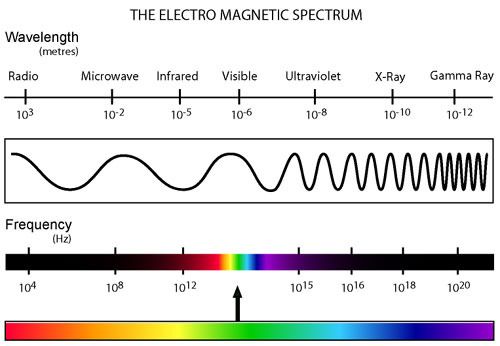Light does not have a pitch; instead, we perceive frequency as color. Just as our ears can only hear a certain range of sound, our eyes have evolved to see a certain range of electromagnetic frequency. The range of frequencies of electromagnetic radiation that we can see is called visible light.
Each frequency that falls in the range of visible light is a different color. A very low frequency electromagnetic wave in the visible range will look red. A slightly higher frequency electromagnetic wave in the visible range will look red with just a little orange. Higher frequency and it will look more and more orange, and at even higher frequencies it will look more and more yellow. The range of frequencies of visible light are the colors of the rainbow arranged from red to violet. All of these frequencies combined together make light that looks white.
There are frequencies much lower than visible light and frequencies much higher than visible light. The entire range of possible frequencies of electromagnetic radiation is known as the electromagnetic spectrum. While everything on the spectrum refers to electromagnetic waves, these waves can be called different things depending on frequency.
The lowest frequency electromagnetic waves are called radio waves. The wavelengths of these waves are as long as buildings. Slightly higher in frequency are microwaves. Higher in frequency are infrared waves. Then we have visible light. Higher frequencies than visible light are ultraviolet waves. Next are X-waves, then gamma waves. Below is a diagram of the electromagnetic spectrum, including the wavelengths of these different frequencies.
